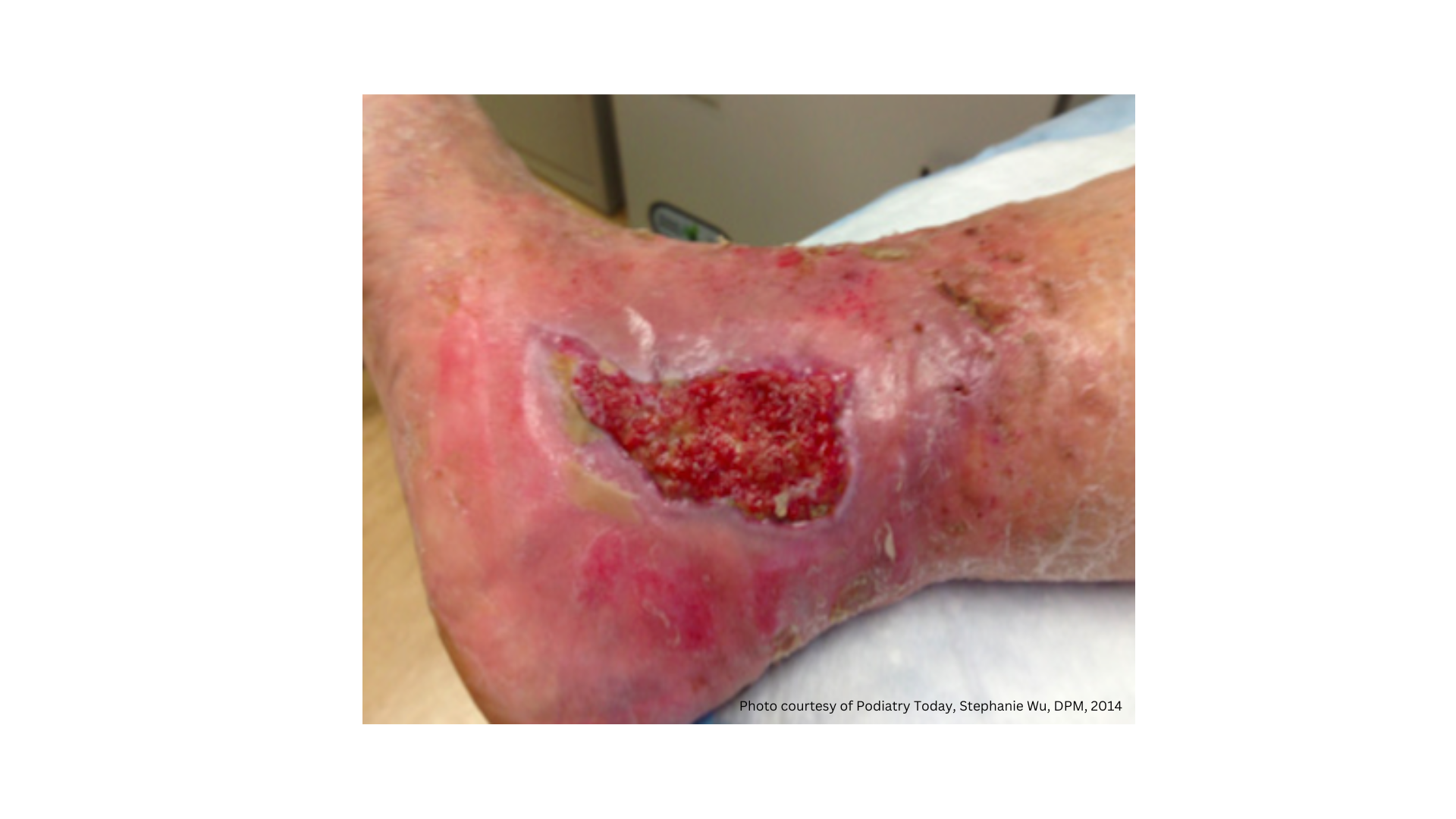Providing Care During a Pandemic: Patients With Comorbidities
April 30, 2022
Introduction
The COVID-19 pandemic has profoundly impacted many aspects of patient care and medical practice. Changes have ranged from supply chain adjustments to transformations in patient interactions. Many of these practices may be standard for the foreseeable future. Although many medical professionals have attended to patients with COVID-19, there has been a major decrease in other necessary aspects of medical care, including wound management.
Challenges Posed by the Pandemic and the Rise of Telemedicine in Wound Care
The negative impact of the pandemic on wound care is not speculative. Throughout the ongoing pandemic, over three-quarters (76.1%) of medical doctors and nurses have reported that the pandemic has affected the management of wound dressings. Moreover, in 82.6% of cases, the clinicians have observed a decrease in patient appointments.1 Additionally, the method of inpatient care has been altered, with many elective surgical procedures deferred until a later date. Patients have been discharged with instructions for follow-up, either in person or through telemedicine. Debridement and compression therapy have been applied at the bedside when necessary, and further vascular workups have been deferred to an outpatient setting.2
These changes to wound management have required increased discharge planning and coordination of care with home health care and medical equipment companies. Additional office or wound care resources have been needed to conduct the follow-up required for complex home wound management plans.2 These challenges have been especially difficult for patients with comorbidities. Additionally, given the higher age and multiple comorbidities, patients with chronic wounds would be at a greater risk for severe infection if they contracted COVID-19.3 However, alternative care methods have been implemented in many instances to enhance wound care throughout the pandemic. Telemedicine options have been used to reduce office visits and allow clinicians to monitor wounds. These visits have allowed practitioners to identify multiple issues that can slow down the healing process, including2:
- Patient adherence issues
- Other challenges to treatment adherence
- Early signs of infection
- Necessary interventions, including sharp or enzymatic debridement
- Patient social factors
Data show that the COVID-19 pandemic has had a negative impact on wound care in terms of diagnostic workup, hospitalization, and access to a primary care physician. As patients discontinued in-person consultations, many patients have continued to change wound dressings at home. However, up to 13% of patients have not changed dressings at all during the pandemic, and over 15% of patients have stated that their wounds have worsened.3 The culmination of COVID-19 stressors on the health care system, including the shortage of health care professionals and hospital beds and the increased risk of transmission in medical settings, demonstrates the need for wound treatments with maximal effectiveness. Effective treatments can reduce patients' length of hospital stay, decrease unnecessary community visits, and lower the COVID-19 infection risk for clinicians, patients, and families.4
Key Strategies
Some key care strategies have enhanced wound care during the pandemic by reducing transmission risks while providing a regular clinical assessment of the wound. These practices include:
- Telemedicine, which reduces the need for in-person visits. Used for decades to manage diabetic patients, it is already deployed in many areas of the world as a health care modality that requires fewer resources.2 Telemedicine provides the benefits of a wound care visit while reducing the risks associated with additional physical contact. It allows clinicians to evaluate the wound, identify signs of infection or failure to heal, and assess the need for interventions, such as sharp or enzymatic debridement, to manage wound complications.2 Clinicians can instruct the patient on care strategies that can be effectively deployed at home.
- Dressings that effectively absorb exudate and require fewer dressing changes. Ineffective absorption and the retention of exudate in dressings can lead to delayed healing and exacerbation of the wound in some instances. Effective dressings should absorb and retain exudate while providing a moist healing environment. Highly absorptive dressings can also reduce the number of required dressing changes, thereby reducing the mechanical force on the wound during dressing changes.4
Conclusion
Wound care specialists play a vital role in healing complex and chronic wounds. However, access to specialists has been limited throughout the pandemic. Despite the challenges presented to wound care throughout the pandemic, sound wound care strategies, such as the use of absorbent dressings and telehealth visits combined with home health care, can ensure that wounds are managed appropriately. These measures can also help clinicians identify when additional interventions, such as debridement, are necessary to promote healing.
References
- Tinelli G, Sica S, Guarnera G, Pitocco D, Tshomba Y. Wound care during COVID-19 pandemic. Ann Vasc Surg. 2020;68:93-94.
- Oropallo A, Lantis J, Martin A, Al Rubaiay AA, Wang N. Wound care during the COVID-19 pandemic: improving outcomes through the integration of telemedicine. J Wound Care. 2021;30(suppl 2):S12-S17.
- Schlager JG, Kendziora B, Paatzak L, et al. Impact of COVID-19 on wound care in Germany. Int Wound J. 2020;18:536-542.
- Gefen A, Ousey K. Safe and effective wound care during the COVID-19 pandemic. J Wound Care. 2020;29(11):622-623. Accessed March 9, 2022. https://doi.org/10.12968/jowc.2020.29.11.622
The views and opinions expressed in this content are solely those of the contributor, and do not represent the views of WoundSource, HMP Global, its affiliates, or subsidiary companies.











